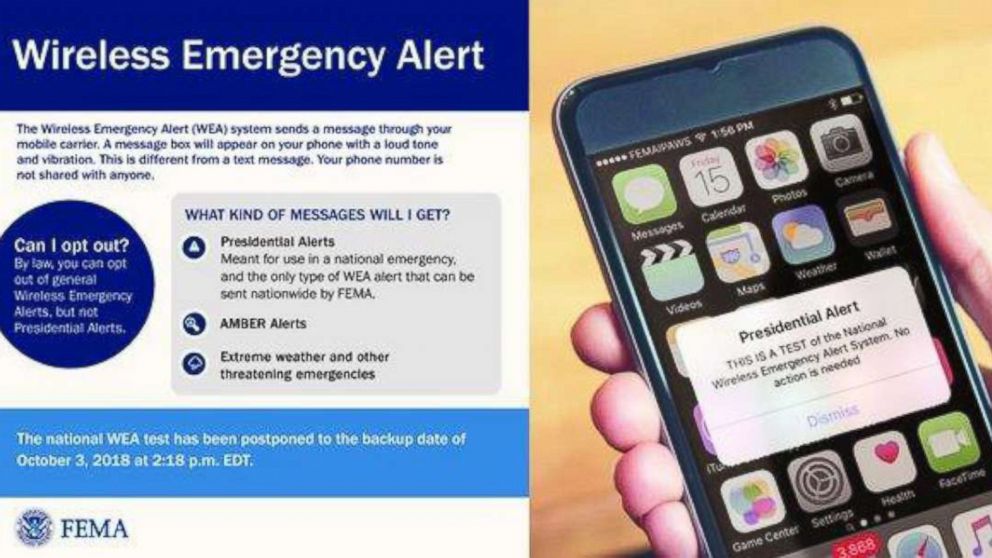
It was loud and intrusive. And there’s no way around it.
At 2:18 p.m. EDT on Wednesday, almost every cell phone in the U.S. sounded an alarm and vibrated. The “Presidential Alert,” orchestrated by the Federal Emergency Management Agency, was a test to see if FEMA’s nationwide wireless emergency alert system works as hoped and can reach most Americans in advance of a national crisis, such as a nuclear attack or terrorist attack in multiple cities.
There is no way to opt out, and not everyone is pleased.
Actress Alyssa Milano has tweeted at FEMA asking how to opt out, taking a swipe at President Donald Trump for not asking consumers for their consent first.
And there was a lawsuit filed in the Southern District of New York wanting FEMA — and Trump – to abandon the program because it “is tantamount to hijacking private property for the purpose of planting a government-controlled loudspeaker in the home and on the person of every American.” A federal judge denied the request for an injunction Wednesday morning.
But FEMA officials say the test is needed necessary to reach all Americans during times of major disaster or attack. The messages also won’t be coming directly from Trump or any other president, despite being called a “Presidential Level Alert.” Emergency messages are pre-written and approved by various government agencies in advance of any test or emergency.
One possible way to avoid the alert is to turn off one’s phone. FEMA says the alert will not interrupt a phone call or an active data session. But that could change, as officials say they are working to ensure the alerts reach everyone.
FEMA officials said they expected the alert to reach 75 percent of wireless-enabled devices, including cell phones and smartwatches.
Even if cell phone users have opted out of other emergency alerts for imminent weather threats or AMBER alerts they should still receive the national-level alert.
The message Wednesday read “Presidential Alert: This is a test of the National Wireless Emergency Alert System. No action is needed.”
About two minutes after the wireless emergency alert, the broadcast system was to send a similar message through radio and television stations.
ABC News’ Aaron Katersky contributed to this report.





